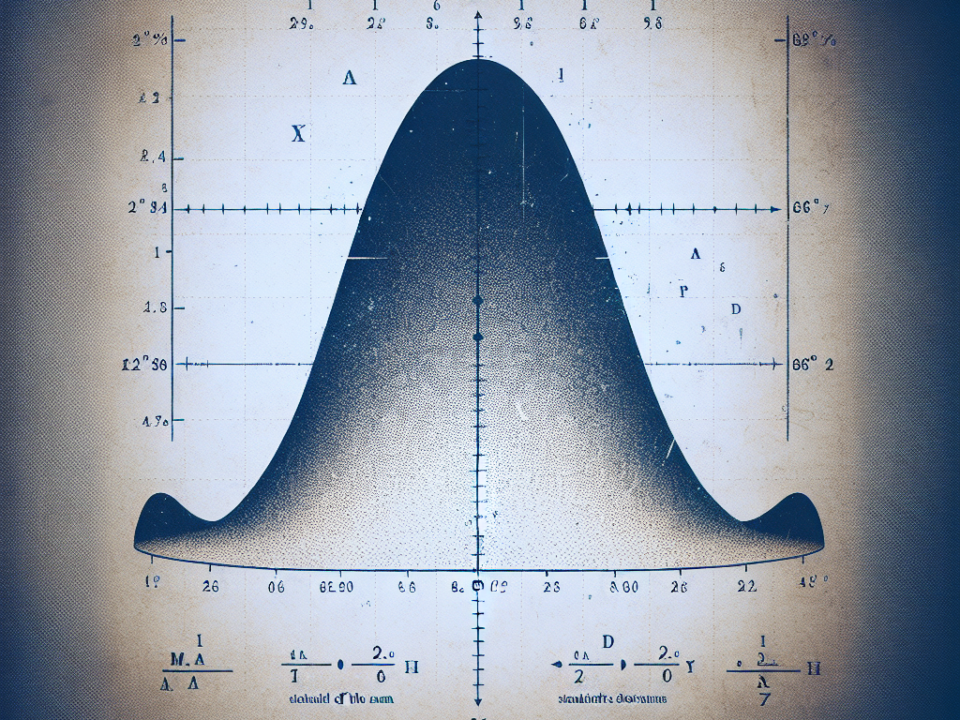[ad_1]
In the world of data analysis, statistical variance plays a crucial role in understanding and interpreting the information gathered. As a medical doctors’ statistical analysis service provider, StatisMed recognizes the importance of statistical variance in making informed decisions based on data. By delving into the concept of statistical variance, we can uncover its significance in data analysis and its implications on medical research and practice.
Understanding Statistical Variance
Statistical variance measures the dispersion of data points in a dataset around the mean. It indicates how spread out the values are and provides valuable insights into the variability within the data 1. In simpler terms, variance quantifies the degree to which data points deviate from the average. For medical professionals, this metric can help in determining the consistency or variability of certain medical measurements or outcomes.
When analyzing medical data, researchers often encounter different levels of variance, which can impact the reliability of their findings. By understanding the significance of statistical variance, medical practitioners can better evaluate the credibility of their research outcomes and conclusions.
Importance of Statistical Variance in Data Analysis
- Data Quality Assessment: Statistical variance helps in assessing the quality of data collected during a medical study. By analyzing the spread of data points, researchers can identify potential outliers or errors that may skew the results. This ensures that the data used for analysis is reliable and accurate.
- Decision Making: Statistical variance aids in making informed decisions based on data. By understanding the variability within the data, medical professionals can determine the level of uncertainty associated with their findings. This helps in choosing appropriate treatment protocols or research methodologies.
- Predictive Modeling: Variance plays a crucial role in predictive modeling within the medical field. By analyzing the variability of key parameters, researchers can develop accurate models for predicting disease outcomes, patient responses to treatment, or healthcare trends. This enables healthcare providers to proactively address potential issues and improve patient care.
- Risk Assessment: Understanding statistical variance allows medical practitioners to assess the risk factors associated with certain medical conditions or treatments. By analyzing the variability of risk indicators, doctors can better tailor their interventions to suit individual patient needs and minimize potential adverse outcomes.
- Research Validity: Statistical variance is essential for validating research findings in the medical field. By evaluating the dispersion of data points, researchers can determine the robustness of their conclusions and ensure that their results are statistically significant. This enhances the credibility and reliability of medical research studies.
Application of Statistical Variance in Medical Research
In the realm of medical research, statistical variance plays a vital role in various aspects of data analysis and interpretation. From clinical trials to epidemiological studies, understanding the variability within data is crucial for deriving meaningful insights and drawing accurate conclusions.
- Clinical Trials: In clinical trials, statistical variance helps in evaluating the efficacy of new treatments or interventions. By analyzing the spread of patient outcomes, researchers can determine the consistency of treatment effects and assess the potential benefits or risks associated with a particular therapy.
- Epidemiological Studies: Statistical variance is instrumental in epidemiological studies that examine the prevalence and distribution of diseases within populations. By analyzing the variability of disease indicators, researchers can identify trends, risk factors, and potential outbreaks, enabling public health officials to implement targeted interventions.
- Health Outcome Analysis: Variance analysis is essential for assessing health outcomes and patient responses to medical interventions. By measuring the variability of treatment outcomes, healthcare providers can determine the effectiveness of specific therapies, identify areas for improvement, and tailor treatment plans to optimize patient care and recovery.
Conclusion
In conclusion, statistical variance is a vital component of data analysis in the medical field. By understanding the significance of variance, medical professionals can make well-informed decisions, validate research findings, and improve patient care outcomes. As a statistical analysis service provider for medical doctors, StatisMed emphasizes the importance of statistical variance in driving evidence-based practices and advancing medical research.
By incorporating statistical variance analysis into data interpretation and decision-making processes, medical practitioners can enhance the quality and reliability of their research outcomes, ultimately benefiting patients and healthcare systems worldwide.
Remember, when it comes to data analysis in the medical field, embracing statistical variance is key to unlocking valuable insights and making impactful contributions to patient care and research advancement.
[ad_2]







